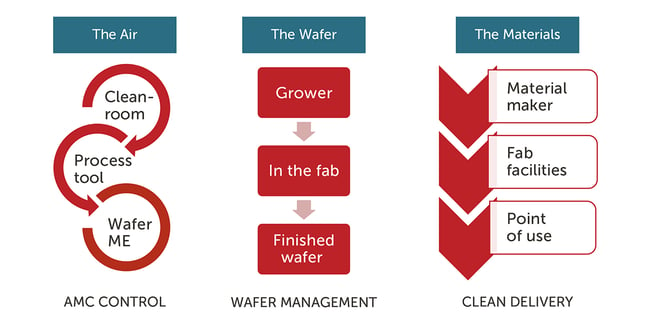The rapid increase of semiconductors in cars enables significant safety, connectivity, mobility, and sustainability improvements. The standards to measure reliability under the tough conditions a car presents are based on how vehicles operate today. Conventional vehicles are generally idle 95% of the time. As a result, the expected lifetime of the electronics systems is well beyond the lifetime of the vehicle itself.
If the future of transportation will rely on autonomous vehicles that will rarely be idle, the definition of electronics’ reliability and operating lifetime will significantly change. To better prepare for the change, automakers should look at optimizing reliability in IC (integrated circuit) manufacturing. Our full paper examines the role contamination in the chemicals, process gases, and air in a semiconductor fab has, and its impact on electronic vehicle reliability.
Three areas of impact that should be considered when optimizing contamination management: the ambient air in the fab, the environment that surrounds the wafer during its lifetime, and the integrity of the materials across the clean chemical delivery pathway.
- Air – In the broad fab environment and the tool mini environments, air is both an ally and an enemy.
- Wafer – Each transport and storage operation presents an opportunity to safeguard the wafer surface from abrasion and the addition of contaminants.
- Materials – Contaminants may originate in the chemical manufacturer’s raw materials, may be added along the clean chemical delivery pathway, or may be the result of unexpected reactions.
Contamination management in each of these three areas presents opportunities to limit process variability. The first step in limiting variation is detecting it, which can be difficult when the contaminants causing the variation are hard to identify or are caused by an unexpected event. When a contaminant signature can be detected, it leaves clues to its root cause. Careful examination of these signatures can lead to the optimization of a contamination control strategy to eliminate the root cause, reducing overall defectivity.

The automotive manufacturing paradigm shift leads the supply chain to develop electronic systems that meet parts per billion (ppb) failure rates. This requires changing from an electronic component mindset to a system engineering mindset, focused on the validation and verification of these complex electronic systems in the harsh environments they are required to operate. To increase the velocity of change toward this new model, collaboration between semiconductor customers, semiconductor manufacturers, materials suppliers, and equipment suppliers will be the preferred approach to ensure device reliability. Achieving these new manufacturing standards will drive the shift in our transportation habits, increasing safety, mobility, and sustainability.
Read the full paper, Cars and Chips: The Acceleration of Electronic Systems




